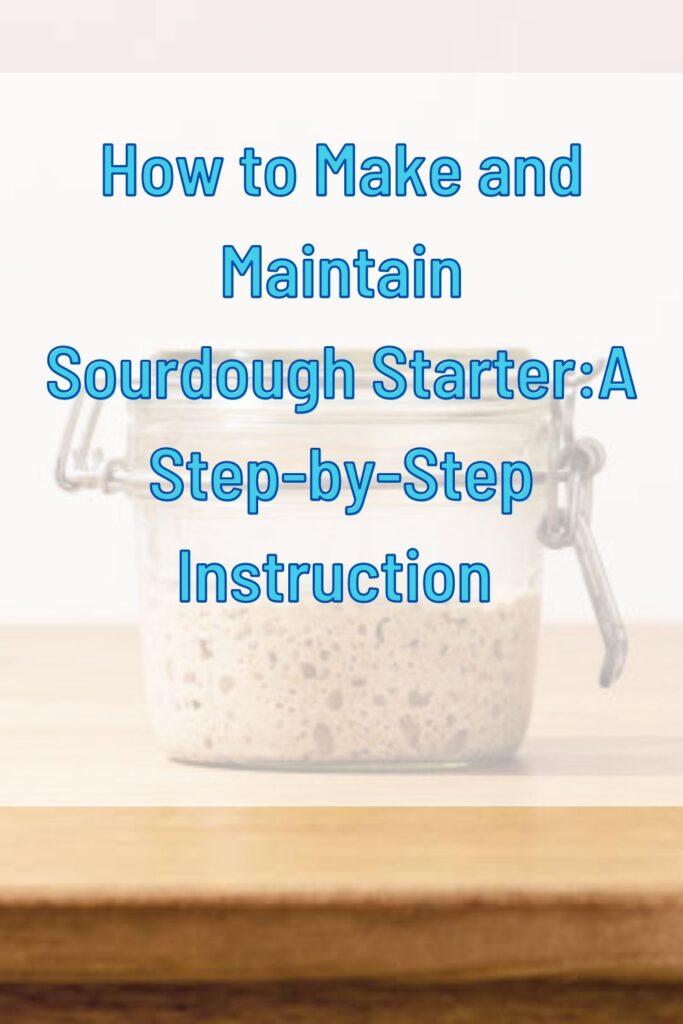
Sourdough bread has gained immense popularity in recent years, with its tangy flavor, chewy texture, and rustic appeal. The key to making delicious sourdough bread lies in a healthy and robust sourdough starter. In this blog post, we’ll walk you through the process of creating and maintaining your own sourdough starter, ensuring that you have a steady supply of homemade sourdough bread at your fingertips. As I have just started my own sourdough journey I wanted to record all of the tips and tricks I have found along the way. Enjoy!
Sour Dough Starter and Maintenance
Here's a great starter recipe and maintenance information for sourdough.
Equipment
- 1 Glass Mason Jar Large
- Measuring Cups
- cloth or plastic wrap
Ingredients
- 100 grams Whole Wheat Flour
- 100 grams All-Purpose Flour
- 200 ml Water
Instructions
- Day 1: In a clean glass jar or container, combine 50 grams of whole wheat flour and 50 grams of all-purpose flour.
- Add 100 milliliters of water to the flour and mix well until there are no dry lumps. Ensure the mixture has a consistency similar to a thick pancake batter.
- Cover the jar loosely with a clean cloth or plastic wrap and let it sit at room temperature (around 70-75°F or 21-24°C) for 24 hours.
- Day 2: After 24 hours, you may notice some activity in your starter, such as small bubbles or a slightly sour smell. Discard half of the starter (approximately 100 grams) and add 50 grams of whole wheat flour and 50 grams of all-purpose flour. Add 100 milliliters of water and mix well.
- Cover the jar again and let it sit at room temperature for another 24 hours.
- Day 3 and onward: Repeat the process of discarding half of the starter and feeding it with equal parts of whole wheat flour, all-purpose flour, and water every 24 hours. As the starter develops, you'll notice more activity and a tangier aroma. This process usually takes around 7 to 10 days.
Notes
Part 2: Maintaining Your Sourdough Starter
Once your sourdough starter is active and bubbly, you’ll need to maintain it regularly to keep it healthy and vigorous. Here’s how:
Feeding Schedule:
- Daily Feeding: Discard half of the starter and feed it with equal parts (by weight) of flour and water. For example, if you have 100 grams of starter, discard 50 grams and add 50 grams of flour and 50 milliliters of water.
- Room Temperature: If you bake with your starter frequently, you can store it at room temperature and feed it daily. Keep it in a glass jar with a loose lid or cover to allow airflow.
- Refrigerator Storage: If you use your starter less frequently, you can store it in the refrigerator. Feed it as usual, and then transfer it to the refrigerator immediately after feeding. The cold temperature will slow down the fermentation process, and you’ll only need to feed it once a week.
- If your starter develops a strong, unpleasant smell or turns pink or orange, it may indicate that it has gone bad. In such cases, discard the starter and start the process again from scratch.
- If your starter separates into a liquid layer on top and a dense layer at the bottom, it’s called “hooch.” Pour off the liquid and feed the starter as usual.
- If your starter becomes less active or doesn’t rise as much as before, it may need more frequent feedings or a larger feeding ratio.
- Making and maintaining a sourdough starter is a rewarding process that allows you to explore the world of sourdough baking.
Sign Up for a Free Gift below!

[…] that will help you to start down the journey of sourdough. Take baby steps and start with the starter recipe and go from there. Here’s the super simple sourdough bread […]